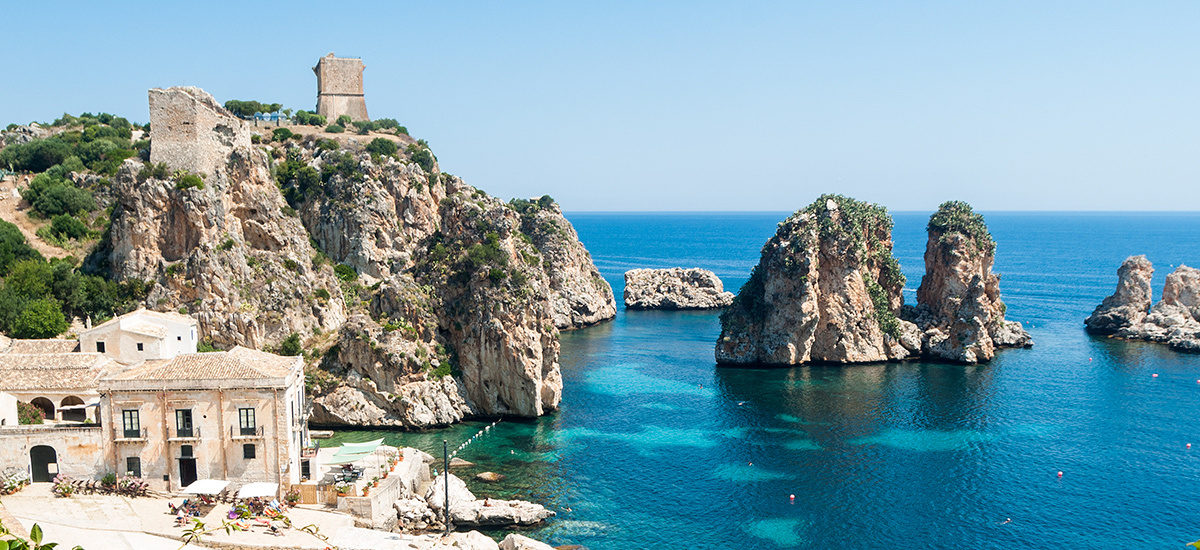
Beauty just around the corner: Italy
Rome with its over 3,000 years of culture and architecture, Florence and the Renaissance masters, Venice the city of canals … and more … Milan, Naples and Palermo. Italy is certainly not lacking in cities of art and is deservedly known as “Bel Paese”. But there are other places, less renowned but just as fascinating. And often they are closer than we thought. These are the #BeautyAroundTheCorner, protagonists of the new itinerary that we at Rimor want you to enjoy in our company.
After the advice we have given you directly, now is the time for our dealers to show you the hidden beauties of Italy: the #BeautyAroundTheCorner.
[Within the text, click on the names of the attractions in bold to find out more]
PIEDMONT
EVO CAMPER | Novi Ligure (ALESSANDRIA)
Gavi and its Fortress
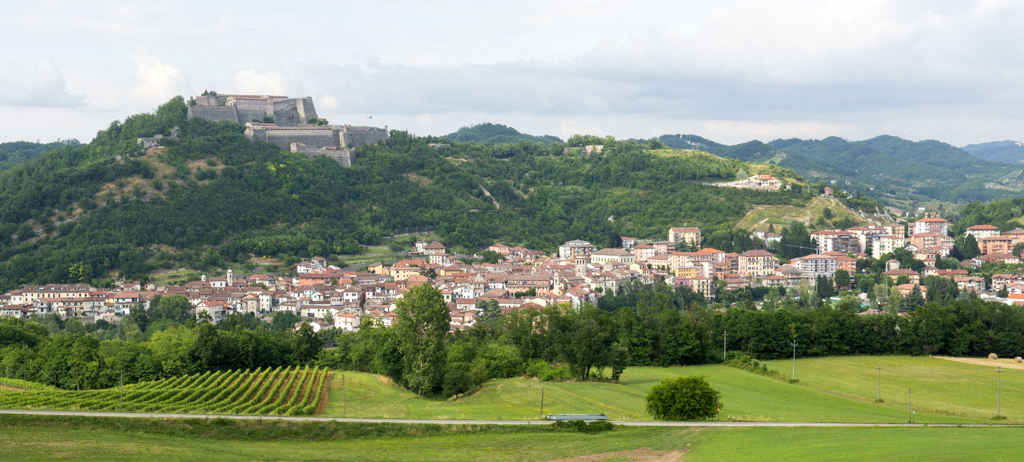
In the region of red wines par excellence, in the land that from the plain of the River Po rises up to the Ligurian Apennines, grows the ancient Cortese vine from which the great Piedmontese white wine, Gavi, is made – taking its name from the town of the same name. The surroundings of Gavi are dotted with medieval villages, each with its own fortress or stately castle, interspersed with vineyards and woods. Given its strategic location on the border, the Fortress of Gavi has been an important defensive outpost since the Middle Ages.
Acqui Terme
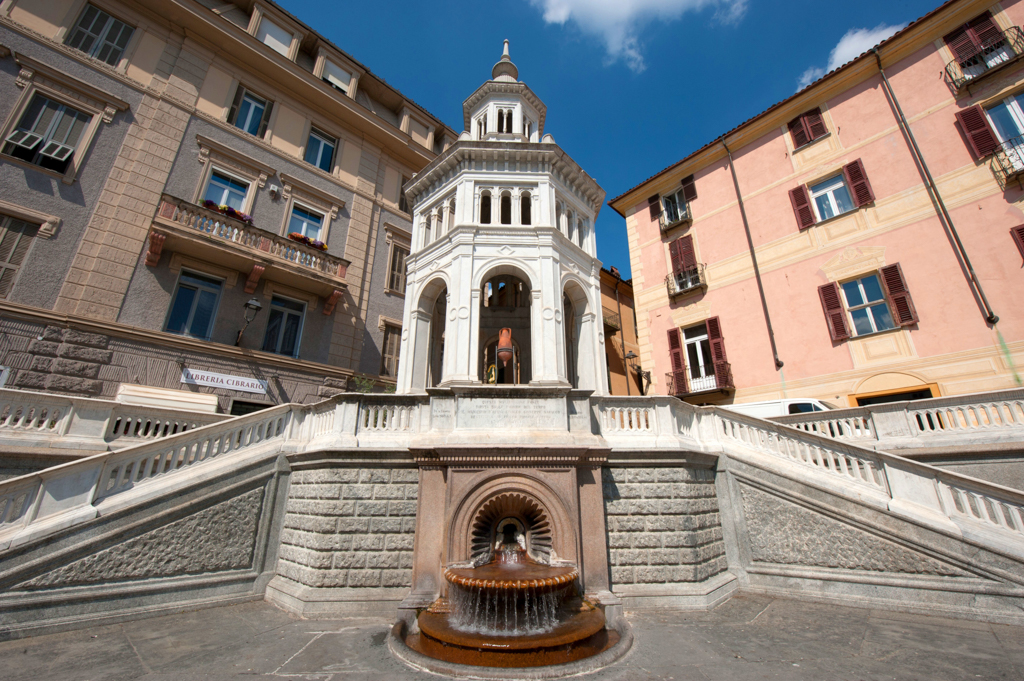
Nestled among the vineyards of Alto Monferrato, Acqui Terme is a charming spa town founded in the 2nd century BC by the Romans, as can be seen from the impressive remains of the Roman aqueduct. The first written records date back to the Roman historians Pliny the Elder and Strabo. The symbol of the town is La Bollente, a fountain from which healing water gushes out at a temperature of 74.5°C, a symbol of its ancient history as a spa resort.
GROSSO VACANZE | Genola (CUNEO)
Langhe
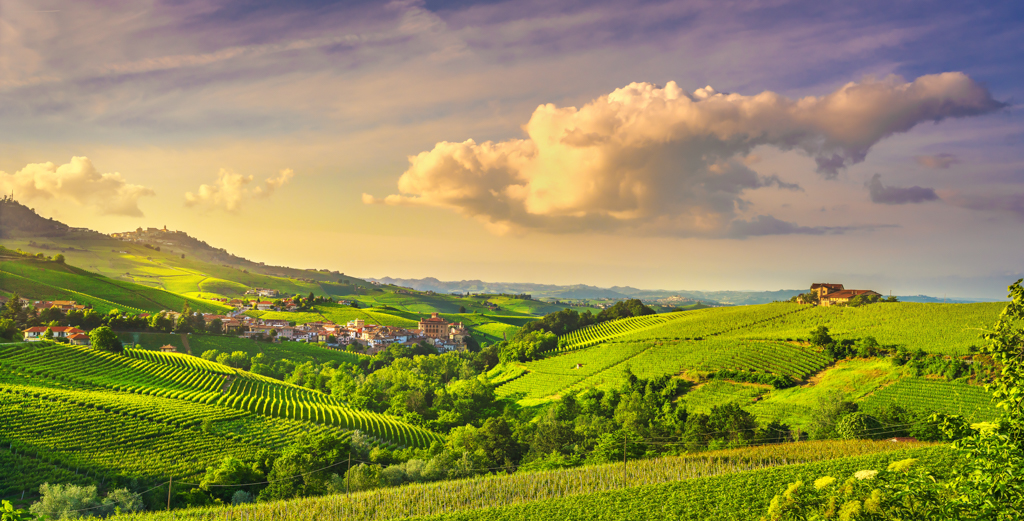
In 2014 the hilly landscapes of the Langhe and Roero became part of the UNESCO World Heritage Site. Straddling the provinces of Cuneo and Asti, the Langhe consists of rolling hills, vineyards and an extraordinary culture of food and wine. Home of the excellent Barolo, Nebbiolo and Barbaresco wines, these lands are a real pilgrimage route that reaches its peak in autumn, when nature offers the best of its precious fruits, above all the Alba white truffle.
Sanctuary of Vicoforte
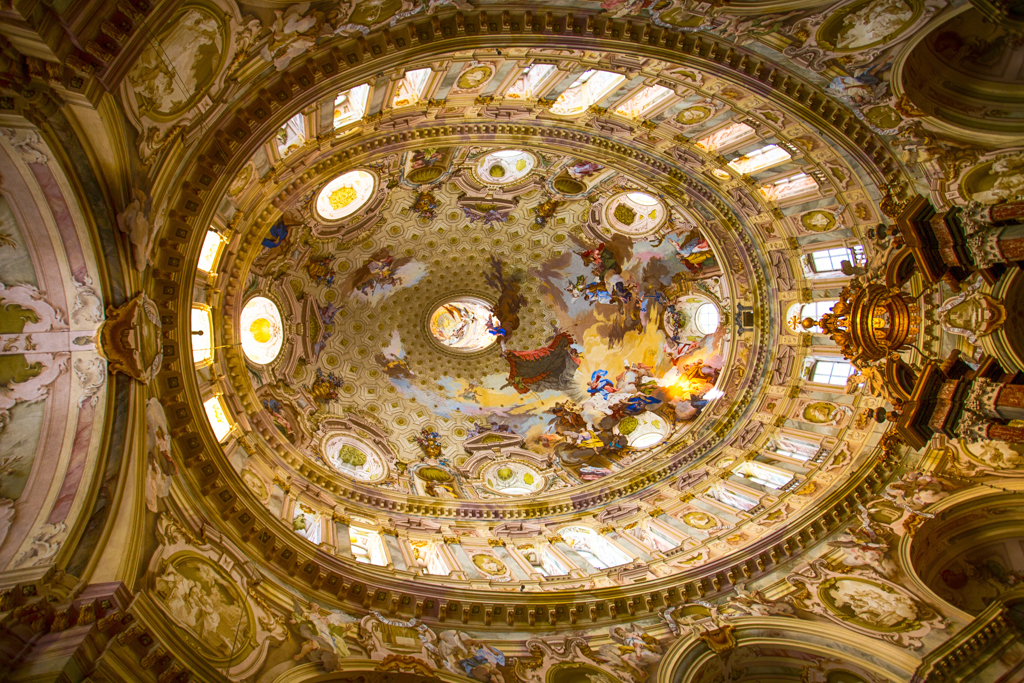
The elliptical cupola of the Sanctuary of Vicoforte is the largest in the world and is the fifth largest dome in sheer size after St. Peter’s Basilica in the Vatican, the Pantheon in Rome, the Cathedral of Santa Maria del Fiore in Florence and the dome of Gol Gumbaz in India. You can even strap on a helmet and harness and climb 60 metres to the very top, to admire its majestic frescoes up close.
LOMBARDY
CAMPER ASSANDRI | Marmirolo (MANTOVA)
San Benedetto Po’
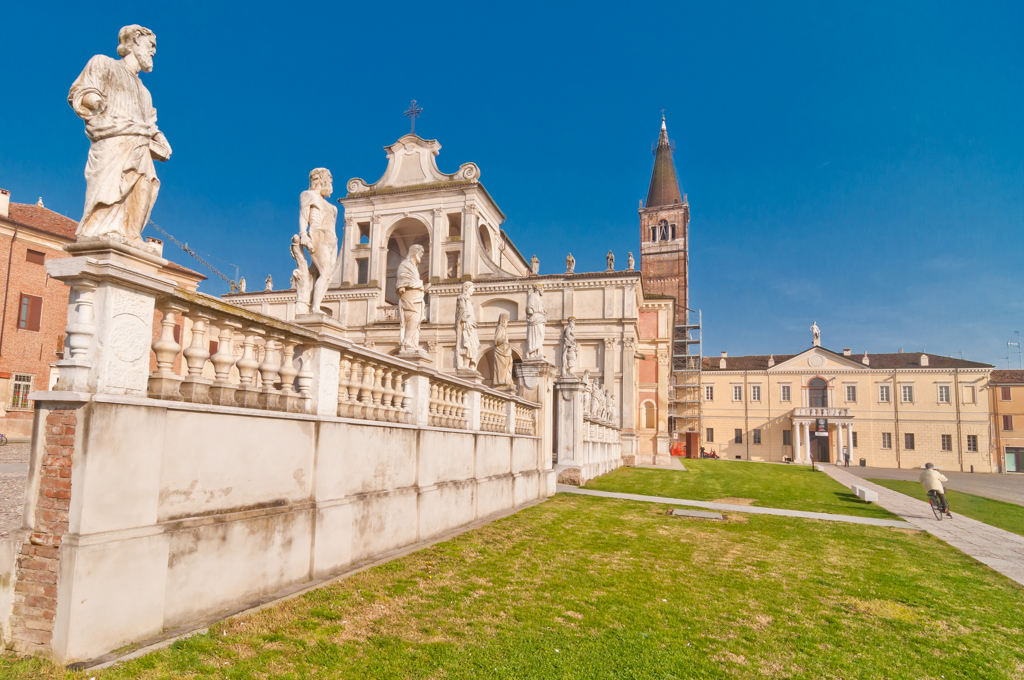
In San Benedetto Po’ stands one of the largest monastery complexes in Europe, known as the Polironian complex. Built in 1007 at the behest of Tedald of Canossa, it became an important centre of spirituality and art. Over a thousand years of history are embedded within its walls, among mosaics, frescoes and archaeological finds.
Castellaro Lagusello
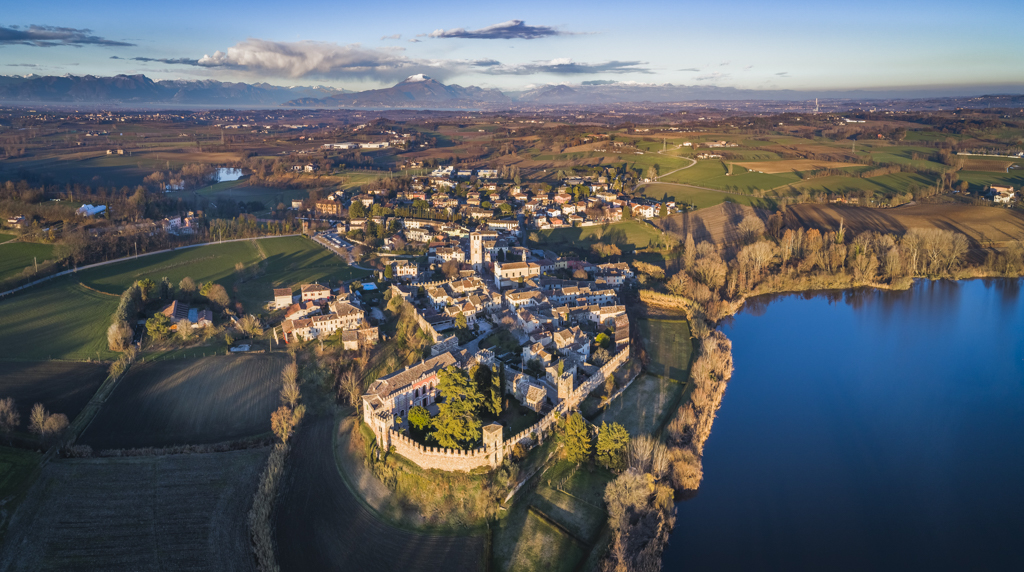
Castellaro Lagusello is a charming fortified village, near a small heart-shaped lake overlooked by a castle dating back to 1100, hence the name. Not far from the village there is the pile-dwelling site of Fondo Tacoli, listed among the UNESCO World Heritage Sites since 2011.
HAPPY CAR | Castiglione Olona (VARESE)
Castiglione Olona
The ancient 15th century town of Castiglione Olona was named “The Tuscan Island in Lombardy” by Gabriele D’Annunzio, who wrote: “I remember the pleasure I had in Castiglione Olona, entering the Baptistery and finding myself immersed in Masolino’s art as if in a fresh Tuscan prairie blooming with yellow and red flowers”.
Santa Caterina Del Sasso
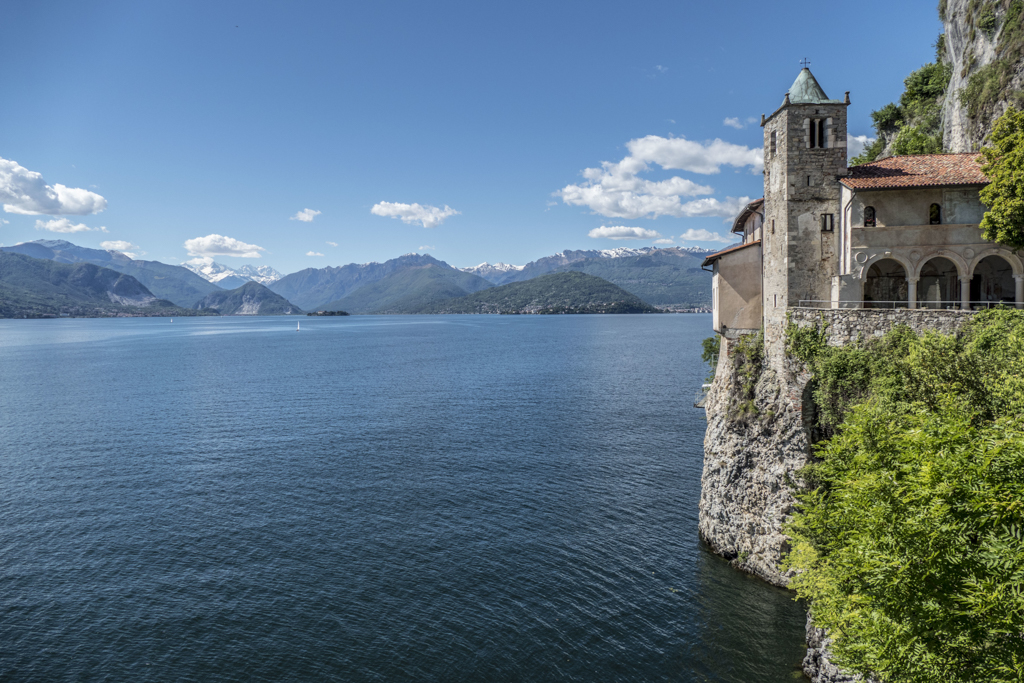
Perched on a rocky ridge overlooking the lake, the Hermitage of Santa Caterina del Sasso is without a doubt one of the most evocative settings on Lake Maggiore. The Hermitage was founded by a rich merchant, a certain Alberto Besozzi. When he found himself in the midst of a shipwreck, Besozzi entrusted himself to Santa Caterina d’Alessandria, vowing penance if he was saved. The merchant was saved by clinging to some rocks and there he withdrew from the world, as promised, to be a hermit: in this very place now stands the Hermitage.
GIGI CARAVANS | Caponago (MONZA E BRIANZA)
Royal Villa of Monza
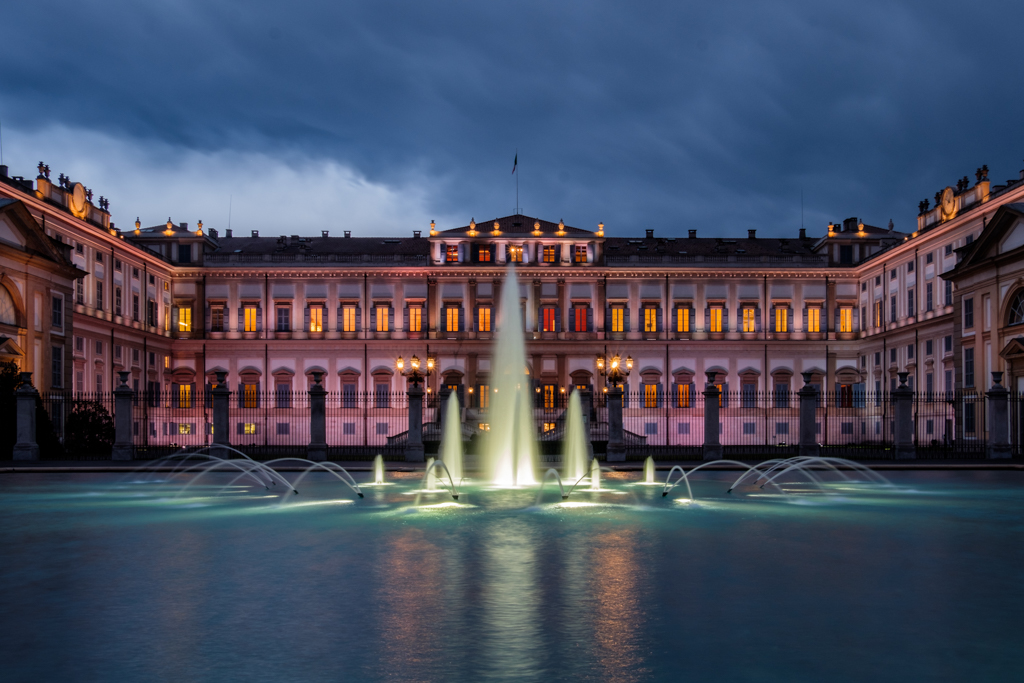
The Royal Villa of Monza, located in a beautiful centuries-old park, is one of the most complete examples of Neoclassicism in Italy. It was built in 1777 to house Archduke Ferdinand of Habsburg, Governor General of Austrian Lombardy. Its gardens, which cover an area of some 40 hectares, represent a heritage of priceless landscape, history and architecture.
Rossini Art Site
Rossini Art Site is both an open-air museum and a place to relax, in a ten-hectare park in the heart of the Lambro Valley. Here, the entrepreneur and patron Alberto Rossini decided to make his art collection available to everyone. The museum is dedicated to abstract sculpture with the most important names of our century: Consagra, Cascella, Pomodoro, Melotti, Munari, Varisco, as well as all the artists of the Nouveau Realisme.
PETALI CAMPER | Chiari (BRESCIA)
Monte Isola
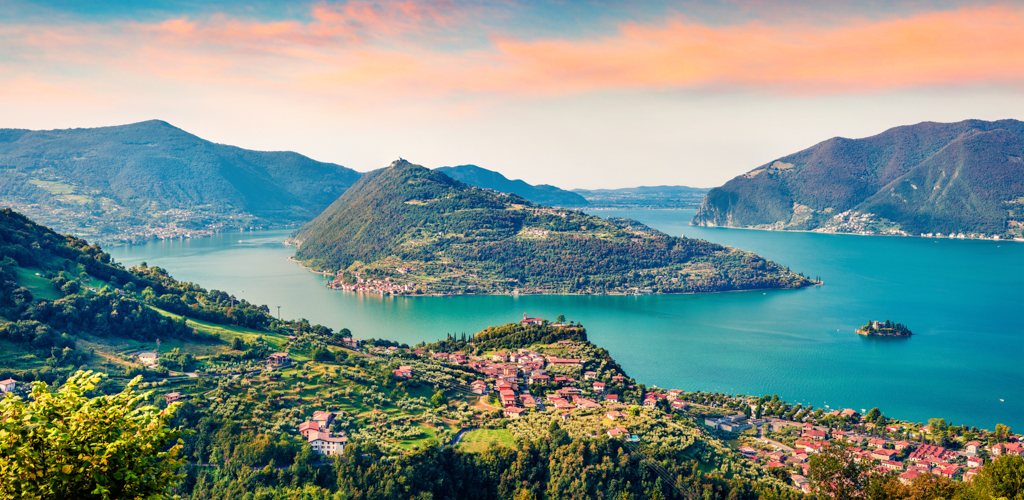
Monte Isola is the highest island of the European lakes; a green mountain in the middle of Lake Iseo which in ancient times was completely covered with woodland and had a pagan temple at its peak. The presence of Roman villas has also been documented.
Pyramids of Zone
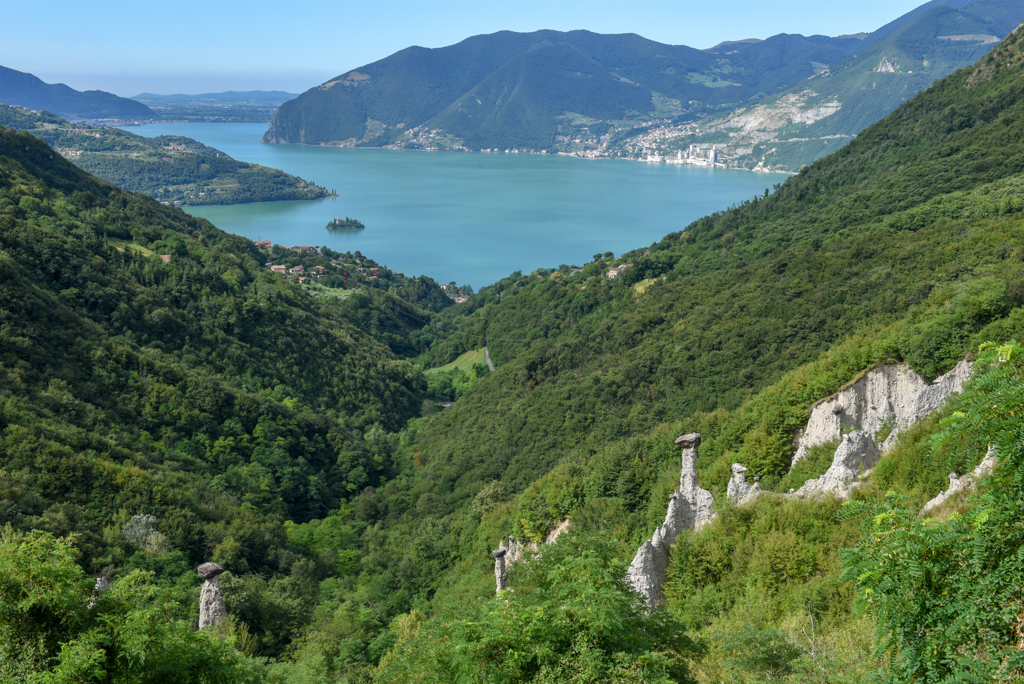
The Pyramids of Zone, imposing structures up to 30 metres high, and known locally as “stone fairies”, are made up of material piled up by a large glacier that passed through here about 150,000 years ago. The “body” of the pyramids has been protected from erosion thanks to a “hat” of heavier material.
VENETO
CREMA SPORT | Padova (PADOVA)
Arquà Petrarca
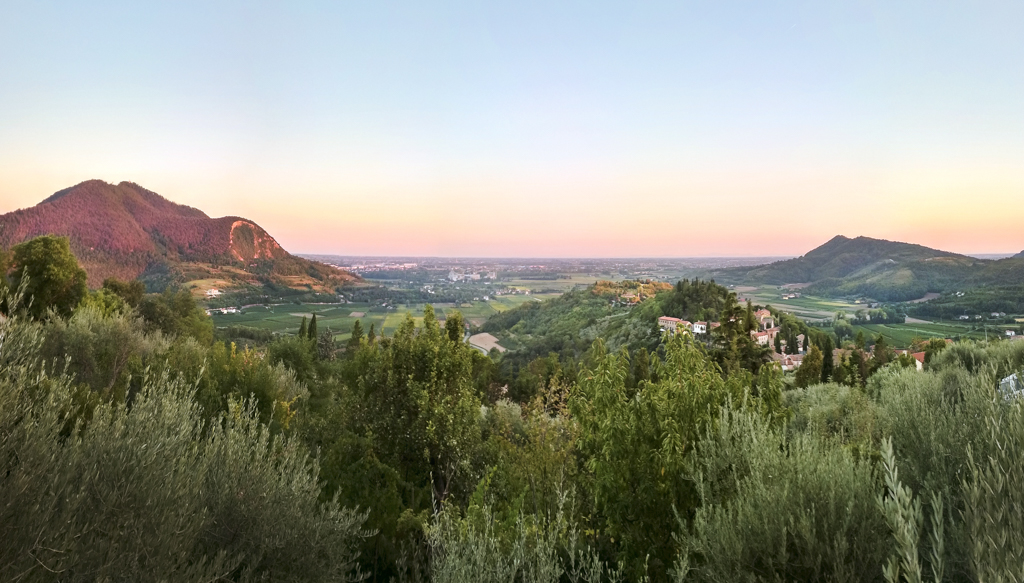
Arquà Petrarca, a wondrous town that has largely retained its 14th century features, owes its name to “Arquata montium”, which means “Cloister of the Mountains”, and to the poet Francesco Petrarca, who spent the last years of his life here. The town boasts ancient origins, as demonstrated by the findings (from the 19th century) of a prehistoric settlement in the vicinity of the Laghetto della Costa, dating back to the Bronze Age.
Montagnana
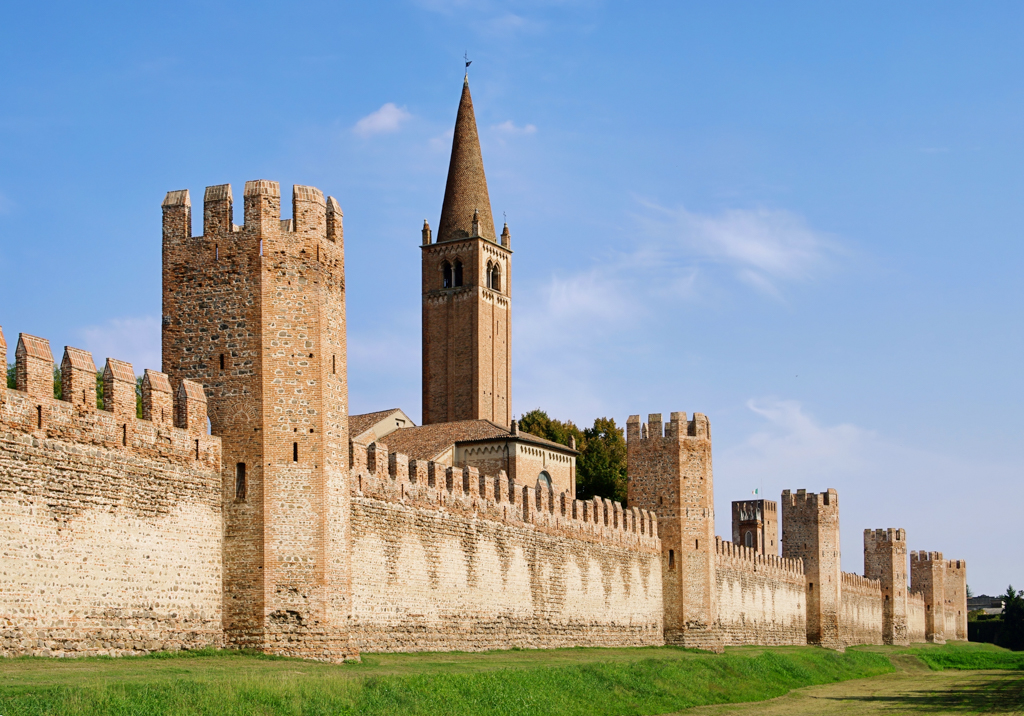
Montagnana is a beautiful walled city that still bears its 2 km long medieval walls fully intact, one of the best-preserved fortifications in the world. It was the Carraresi family who, in the middle of the 14th century, with the intention of strengthening their defences against the nearby Scaligeri of Verona, started the new city walls, with as many as 24 towers about 18 metres high, which enclosed an area of some 24 hectares.
NUOVA MARIL | San Pietro Di Legnago (VERONA)
Borghetto sul Mincio
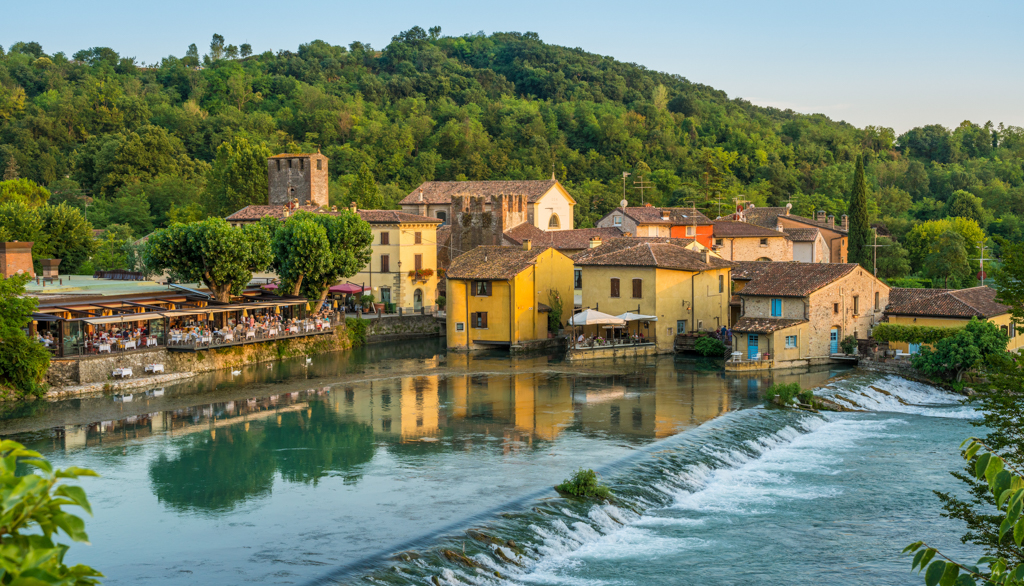
Borghetto sul Mincio has preserved its spectacular medieval appearance as a fortified village on the river, whose bridge has been crossed over the centuries by great armies such as Napoleon’s French army in 1796, or the Piedmontese troops during the Second War of Independence in 1859. From its high walls you can enjoy a wonderful view of the entire region below.
Soave Castle
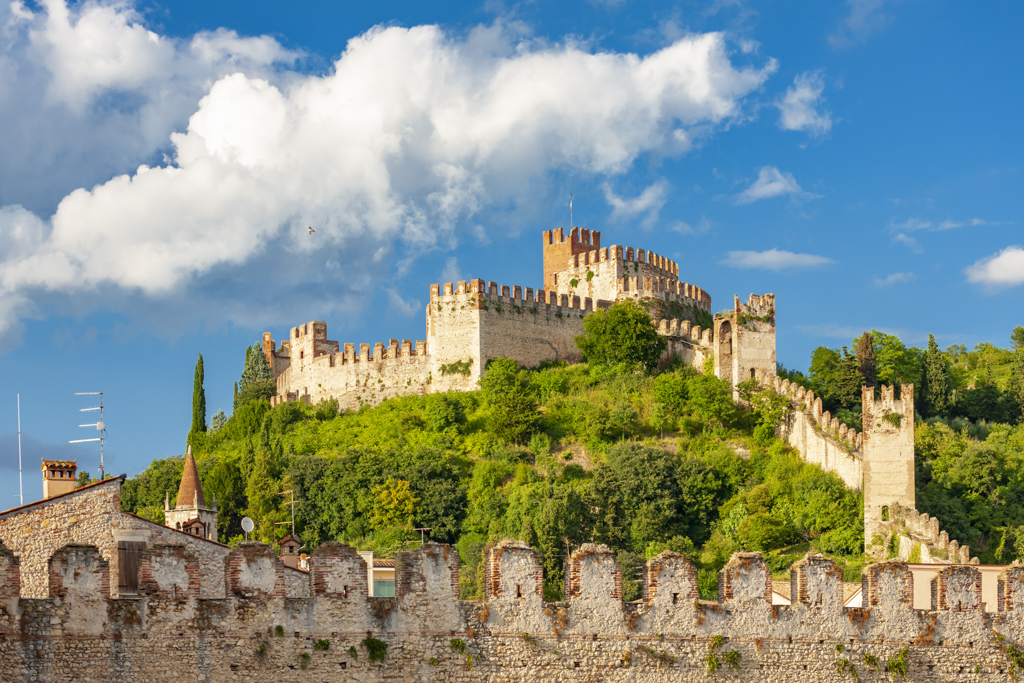
Soave Castle stands on a hill overlooking the surrounding plain. The first evidence of the castle dates back to Frederick I, Barbarossa, although archaeological studies have suggested an initial fortification as early as the Roman times. The homonymous wine is the most famous still white wine of Veneto; in fact, thanks to its unique soil and mild climate, the area of Soave has been famous for its wines since Roman times.
FRIULI-VENEZIA GIULIA
SOIMEX | Villesse (GORIZIA)
Grotta Gigante
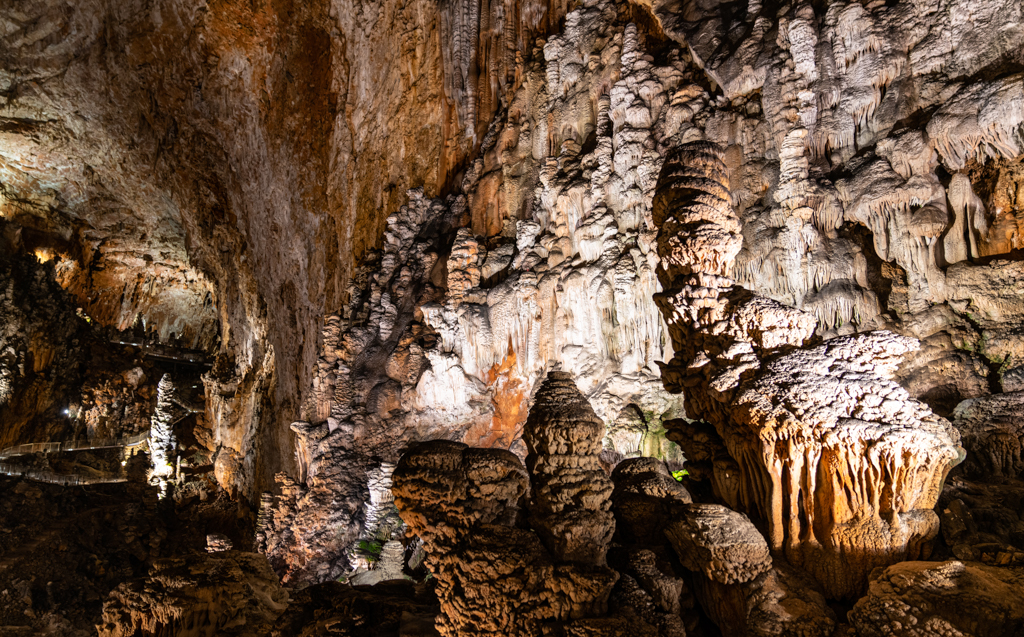
The Grotta Gigante is a cave, open to tourists, with the largest natural cavity in the world, so much so that it was included in the Guinness Book of Records in 1995. Its formation dates back 20–40 million years, and it is the only one of its size that can be visited without the need for specific equipment or caving training. Archaeological discoveries testify to the occasional human presence since the Neolithic period.
Aquileia e Palmanova
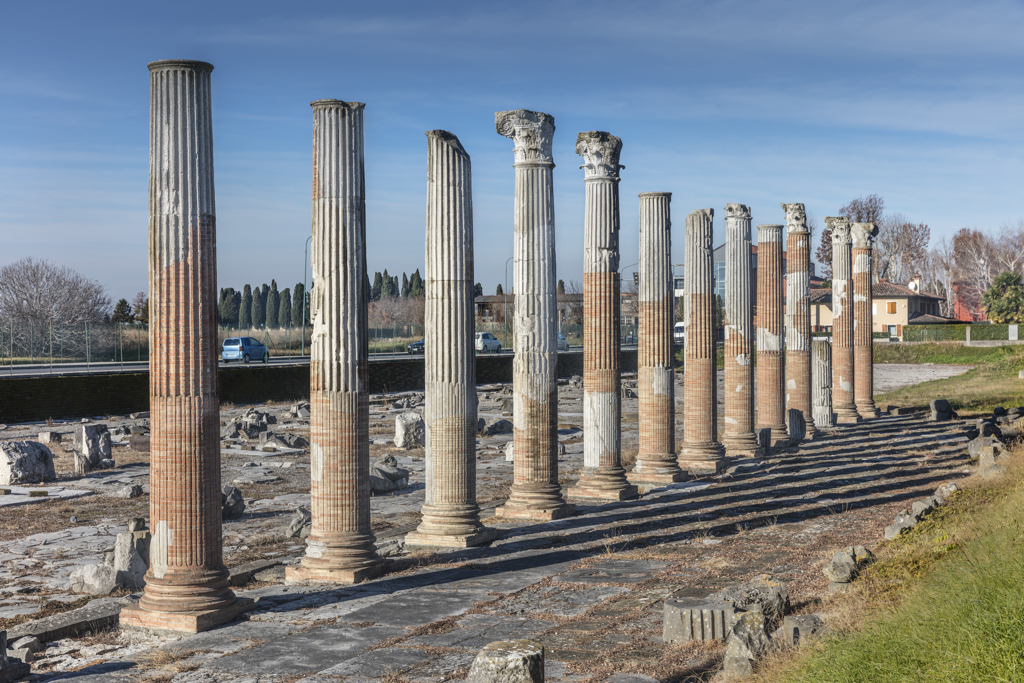
Aquileia, known as “the second Rome”, one of the greatest cities of the Roman Empire and one of the most important ancient ports of the Adriatic, has been offering up its treasures for over a century: the sumptuous monuments of the imperial city, the splendid mosaics of the Basilica, the underground oratories, and the incredible Domus replete with archeological finds.
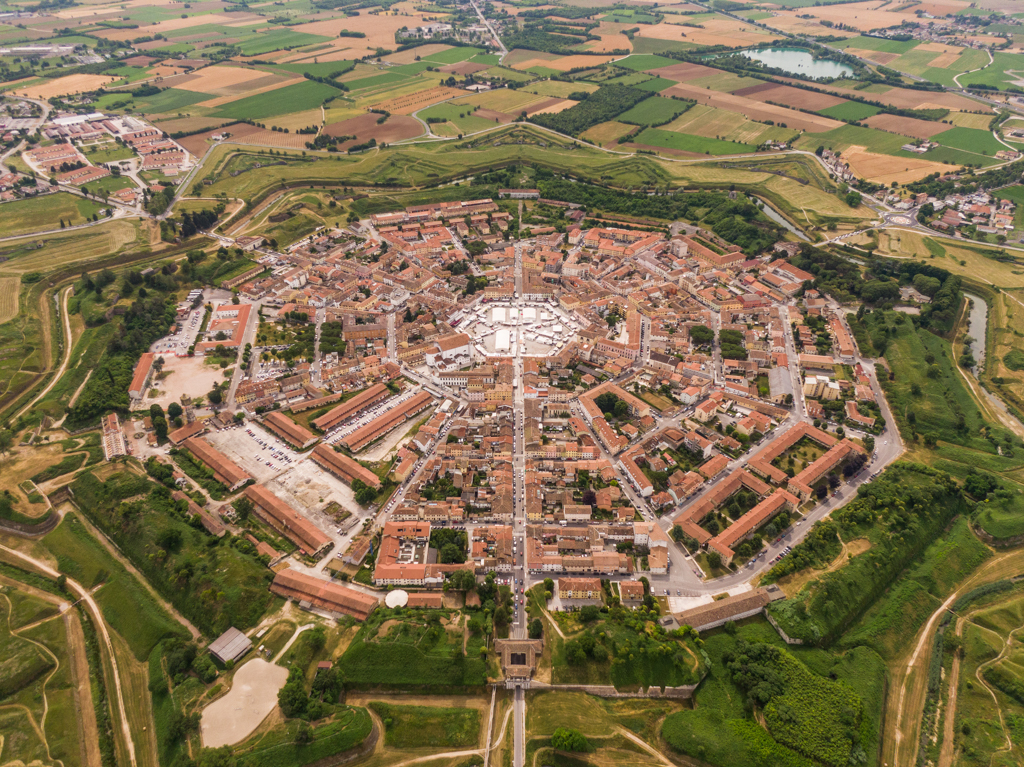
Palmanova, the 9-pointed star-shaped fortress town built in 1593 by the Republic of Venice, with its monumental gates and three defence circles from the 16th, 17th and 19th centuries, is both a model of an ideal Renaissance city as well as an example of military architecture.
EMILIA ROMAGNA
DALL’AGLIO CARAVAN | Lemigliano Di Collecchio (PARMA)
Langhirano and the Castle of Torrechiara
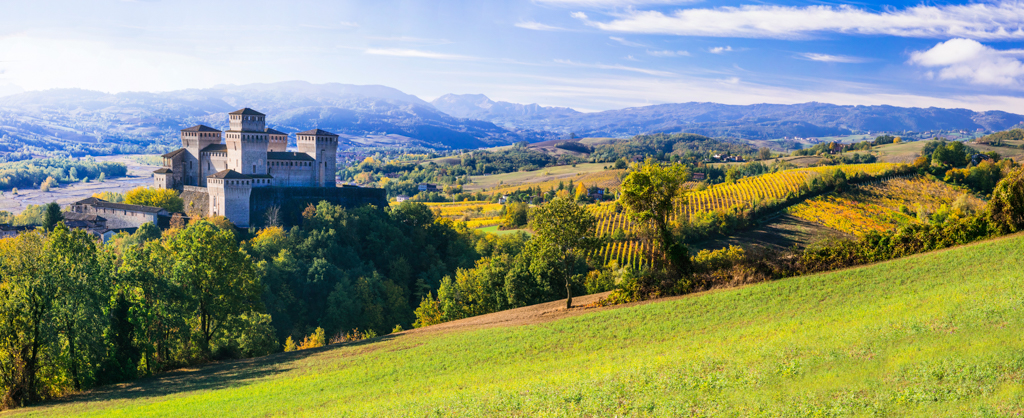
The historic capital of Parma Ham, Langhirano is surrounded by the characteristic buildings in which the hams mature and ‘breathe’ the air of the Parma Valley, whose unique climatic conditions and salt springs make the curing even more delicious.
Torrechiara Castle, considered one of the most remarkable, scenic and best-preserved castles in Italy, was built between 1448 and 1460 by Pier Maria Rossi, as an impregnable military fortress, but also as a love nest.
Rocca Sanvitale of Fontanellato and the Masone Labyrinth
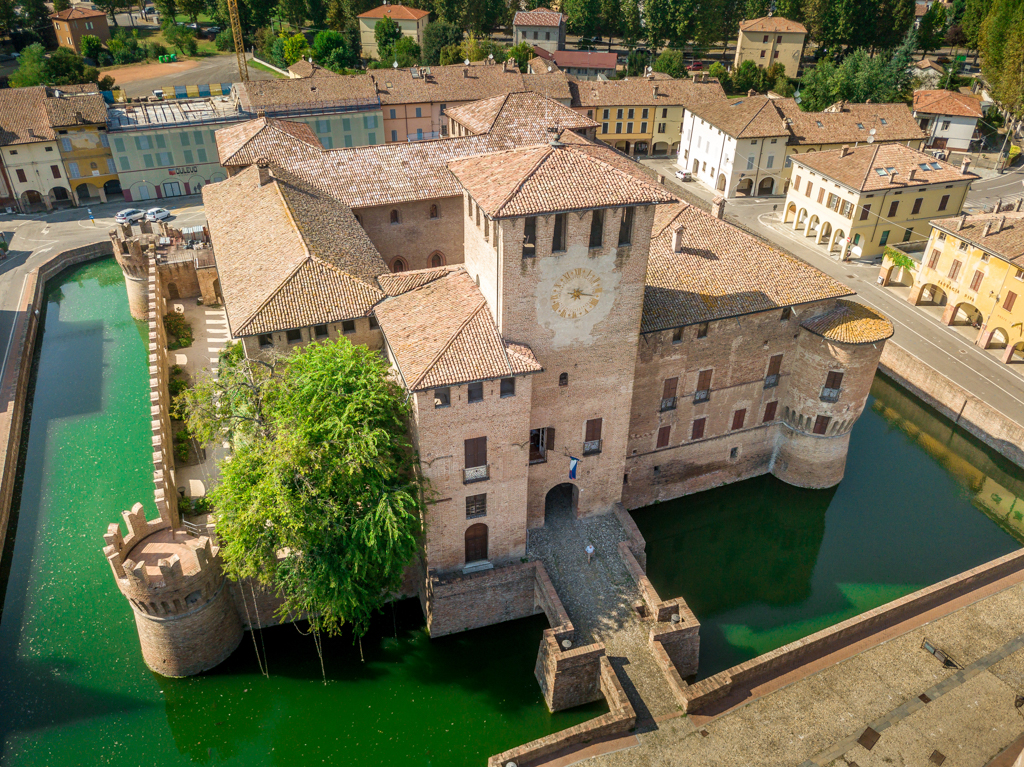
The enchanting Rocca Sanvitale of Fontanellato, a fortress which stands in the centre of the town, surrounded by a large moat of water, contains one of the masterpieces of Mannerism: the small room frescoed by Francesco Mazzola – known as Parmigianino.
The Masone Labyrinth is the largest labyrinth in the world. It was created by the artist Franco Maria Ricci and winds its way over three kilometres, using approx. 200,000 bamboo plants of 20 different species, from dwarf to giant bamboo, whose height ranges from 30 centimetres to 15 metres.
SAFE CAMPER | Anzola dell’Emilia (BOLOGNA)
Dozza
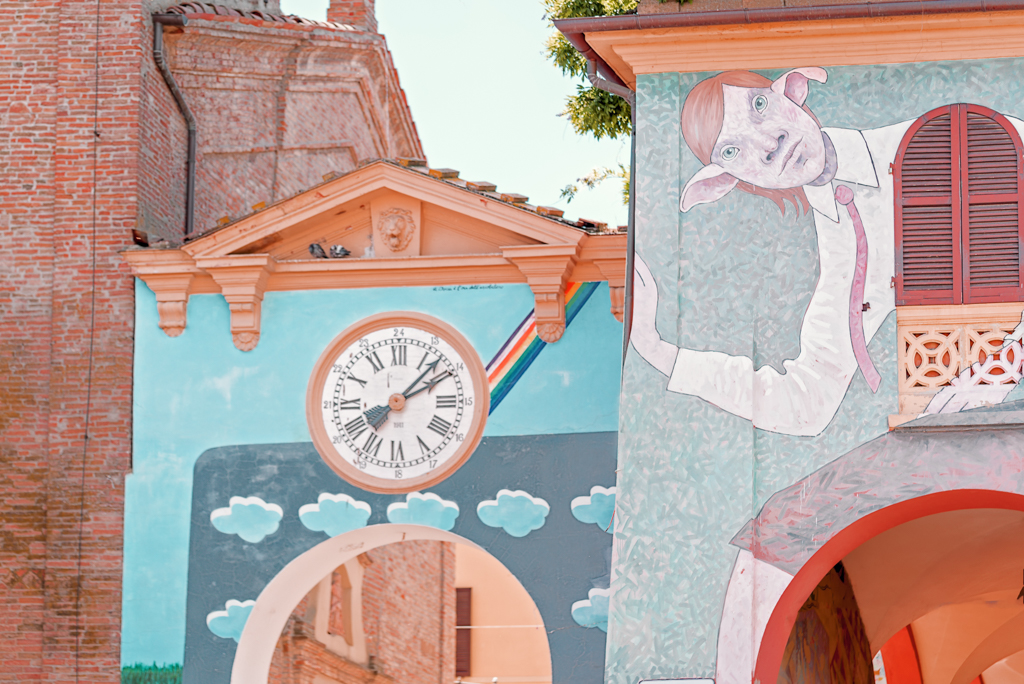
The Medieval Town of Dozza is a real open-air art gallery, with over a hundred works by prestigious names in contemporary art. It all began with the Biennial of the Muro Dipinto (Painted Wall) that since the ’60s has transformed the houses of Dozza into many works of art.
Rocchetta Mattei
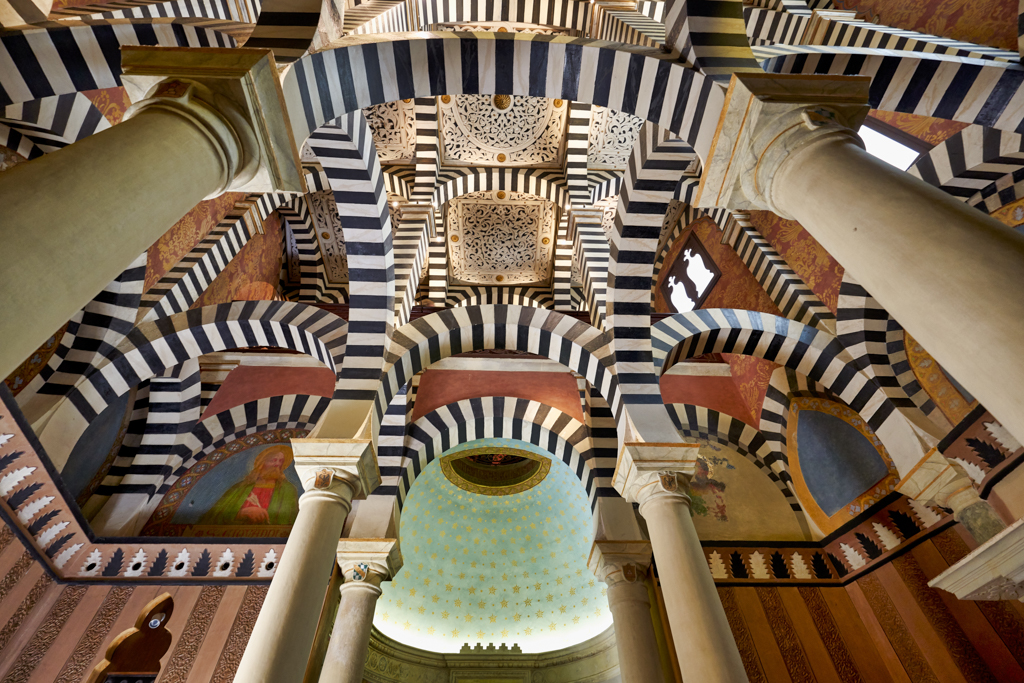
Built on a rocky spur, the castle “Rocchetta Mattei” owes its name to Count Cesare Mattei (1809–1896) who had it built on the ruins of an ancient structure dating back to the 13th century. It is a bizarre, fairy-tale building, a mixture of different styles: the Moorish one prevails, copied from the Alhambra of Granada and the mosque-cathedral of Cordoba.
TUSCANY
PIONIERI VILLAGE | Massa e Cozzile (PISTOIA)
Collodi and the Park of Pinocchio
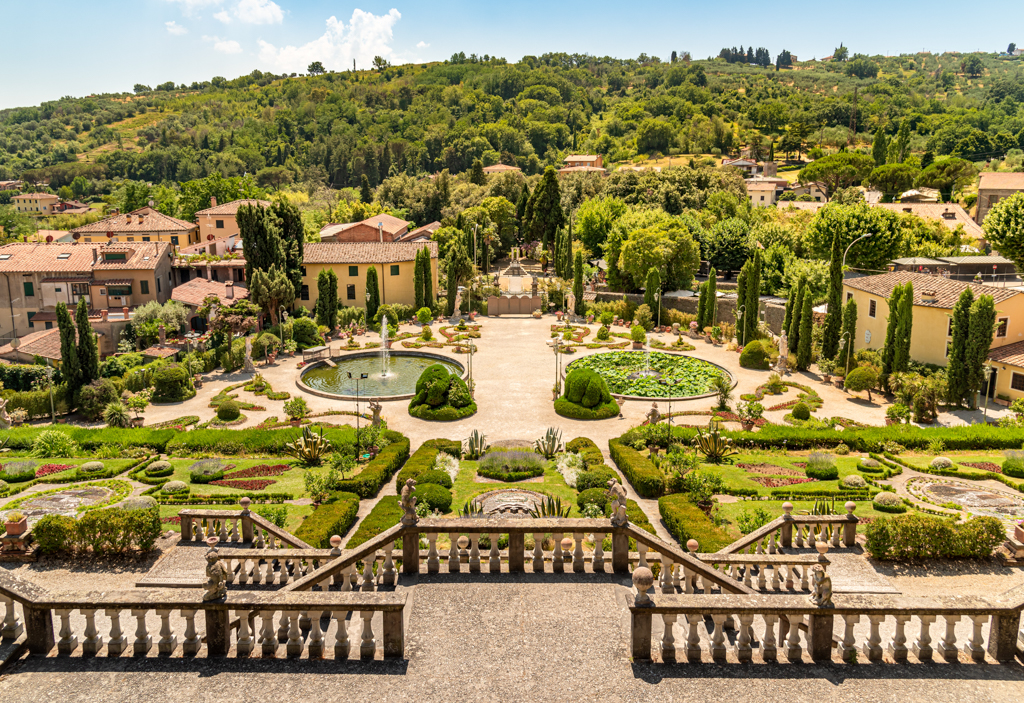
A medieval village dating back to the 12th century, Collodi is linked to the name of Carlo Lorenzini, father of the most famous of puppets, Pinocchio. The Florentine writer, whose mother was originally from the village, spent part of his childhood there and took on its name, writing under Carlo Collodi. The village is characterised by the ancient fortress and the aristocratic Villa Garzoni with its beautiful garden.
The Park of Pinocchio is more than a theme park, it is a genuine outdoor museum, where you can relive the adventures of the famous puppet along a path nestled in the green Mediterranean maquis and among the artworks of some of the greatest sculptors and artists of the 20th century such as Emilio Greco, Pietro Consagra, Venturino Venturi, Marco Zanuso.
Grotta Giusti
The thousand-year-old Grotta Giusti extends over more than two hundred metres underground, creating subterranean labyrinths decorated with stalactites and stalagmites. It is the third largest cave in Europe, and so beautiful that Maestro Giuseppe Verdi called it “the eighth wonder of the world”. In addition to its beauty, what makes the cave an unmissable attraction are the three caves that make up a real natural Turkish bath – ranging from 24°C in Paradise, passing through Purgatory, to 34°C in Hell. The hot-steam vapours, rich in mineral salts, promote a purifying and detoxifying process.
UMBRIA
PERUGIA CARAVAN | Taverne di Corciano (PERUGIA)
Rasiglia
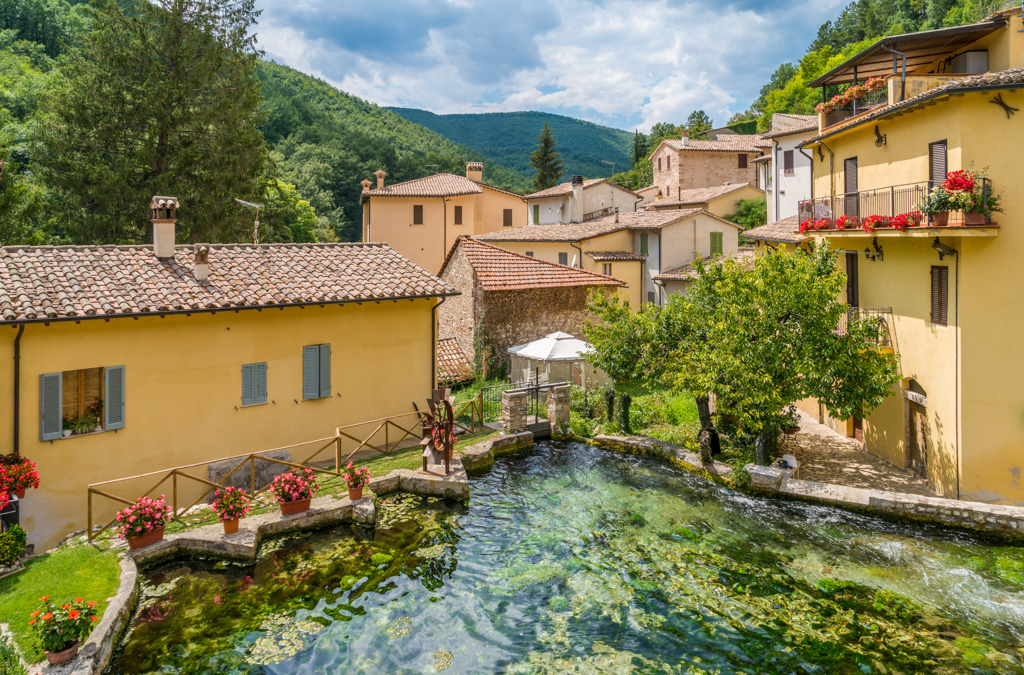
The little Venice of Umbria, the village of Rasiglia was built around the spring of Capovena which, together with the other two springs Alzabove and Venarella, gives shape to this wonder of nature where small stone houses alternate with wooden bridges, mills and pools of water formed by streams and waterfalls.
The abandoned village of Salci
The evocative village-castle of Salci rises atop a small hill on the border between Umbria, Tuscany and Lazio. This village, which in medieval times boasted feudal privileges, having its own prison, autonomous garrison and being able to impose tolls and tributes, after centuries of splendour was abandoned by its last inhabitants in the ’80s.
LAZIO
CENTRO CARAVAN COSTANTINI | ROMA
Nemi
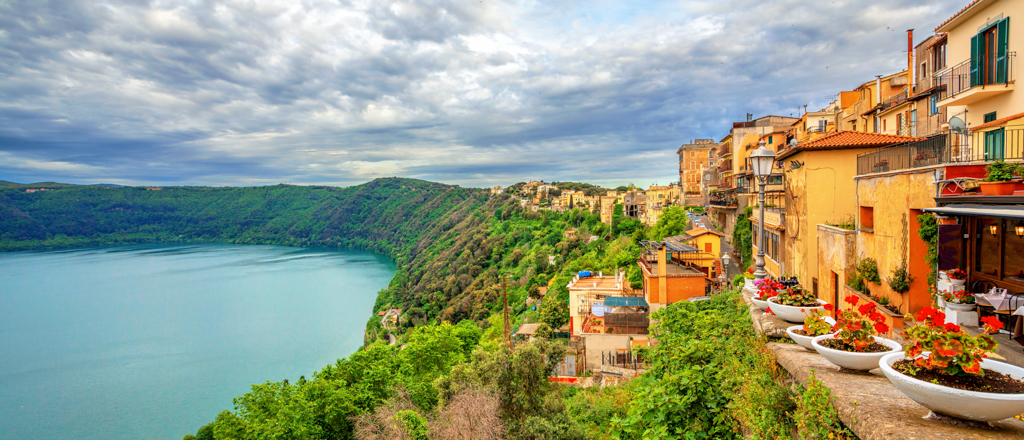
A delightful medieval town nestled on the edge of the crater of the small volcanic lake it overlooks, Nemi is famous today above all for its tasty strawberries. Its history, however, is ancient and significant: its Temple of Diana Nemorensis was considered a sacred place by the Latin League; later, the Romans also appreciated it and Caligula had two large ships built here, which he used as floating reception halls.
Villa Gregoriana in Tivoli
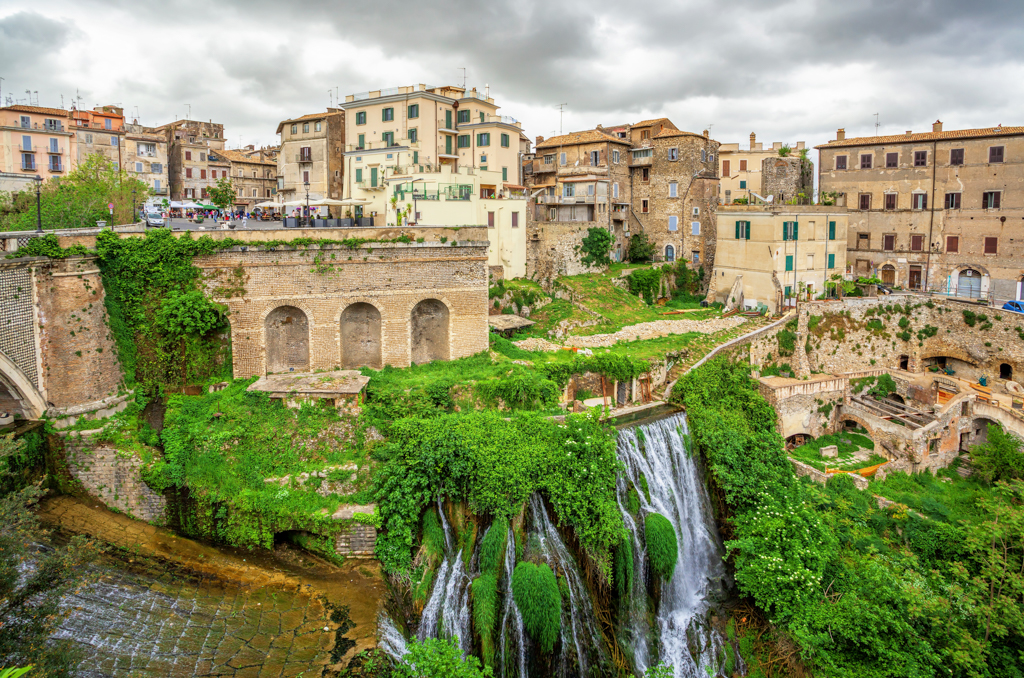
A mere stone’s throw away from Rome stands the Villa Gregoriana, a park located in Tivoli, commissioned by Pope Gregory XVI in the mid-nineteenth century and the destination of travellers, artists, kings and emperors over the centuries. One of the most romantic walks in the world, among woods, paths, waterfalls, caves and vegetation that extends to the foot of the ancient acropolis.
CAMPANIA
CENTRO CARAVAN ROMANIELLO | Casagiove (CASERTA)
Amphitheatre Campano of Capua
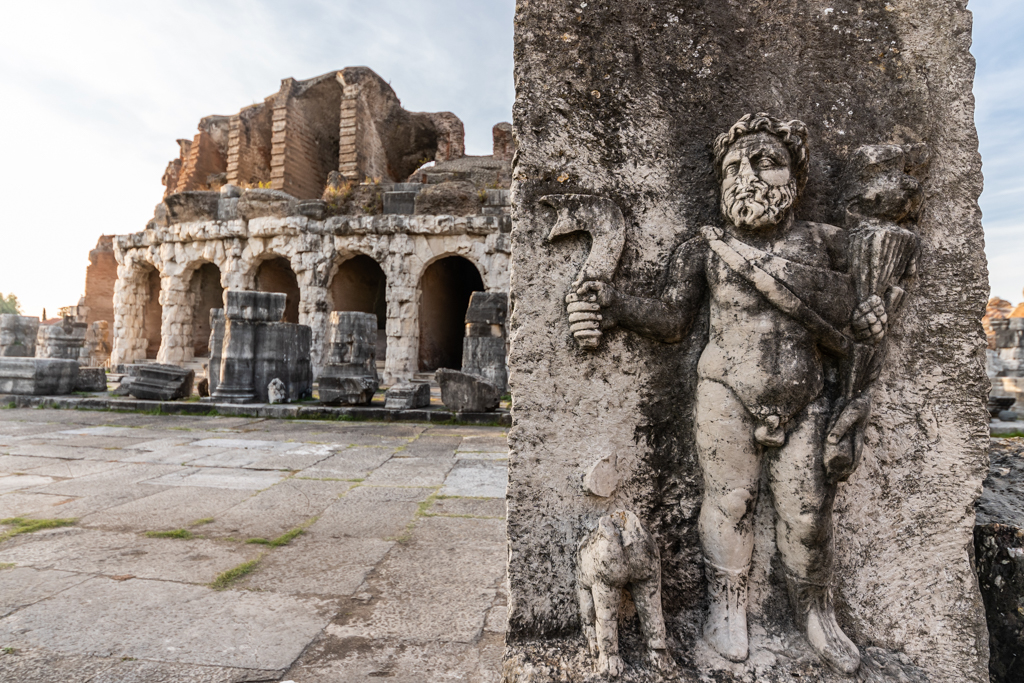
The Amphitheatre of Capua is the second largest in Italy after the Colosseum, and is thought to have served as the model for it as the first Roman amphitheatre ever built. This monumental work of ancient architecture was the site of the first and most famous school for Gladiators, from which Spartacus led his famous revolt in 73 BC, blocking the city of Rome for two years.
Sant’Agata Dé Goti
Resting on a tuff ridge between two creeks, Sant’Agata Dé Goti seems to be floating on the rock. Its village is rich in splendid monuments: the Longobard Castle, the magnificent Cathedral of the Assumption and the Carolingian Aqueduct by Vanvitelli, the designer of the Royal Palace of Caserta.
CALABRIA
COSENZA CAMPER CARAVAN | Mangone (COSENZA)
Pentedattilo
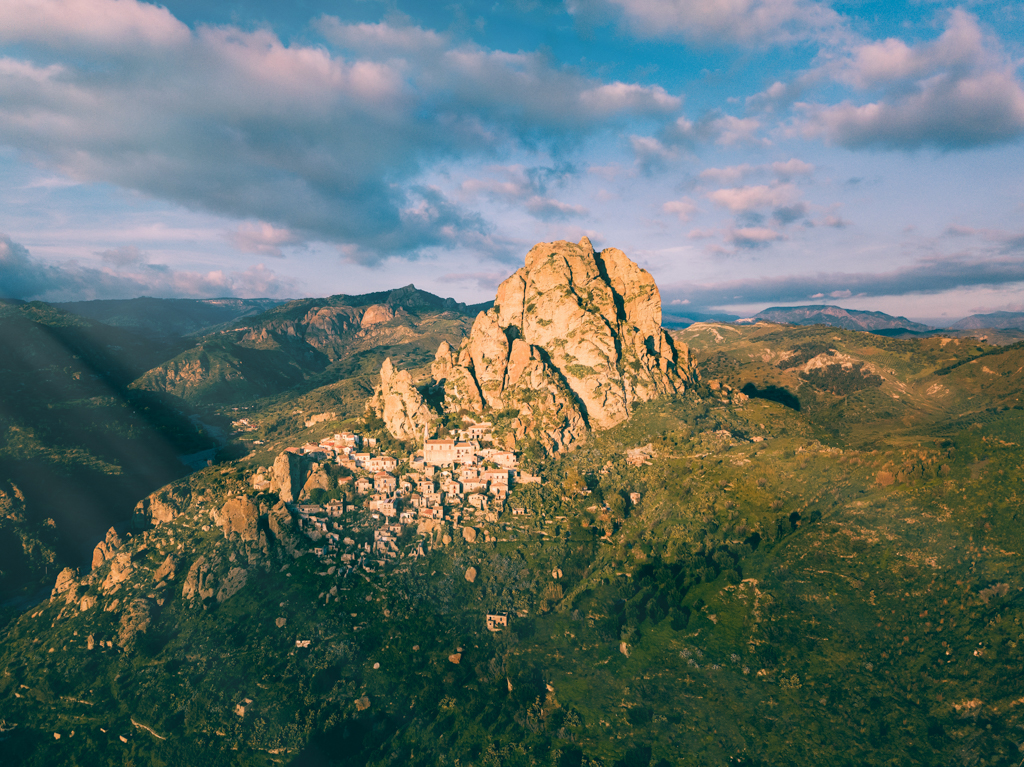
A small village founded in 640 BC by Greek settlers, nestled among the rugged mountains of the Ionian coast, Pentedattilo takes its name from the shape of the rock on which it lies, similar to a giant stone hand (‘penta’ and ‘daktylos’ i.e. five fingers). Unfortunately, the earthquake of 1783 and the subsequent tremors, together with the ghost stories that still circulate around this place today, contributed to its abandonment.
Scilla
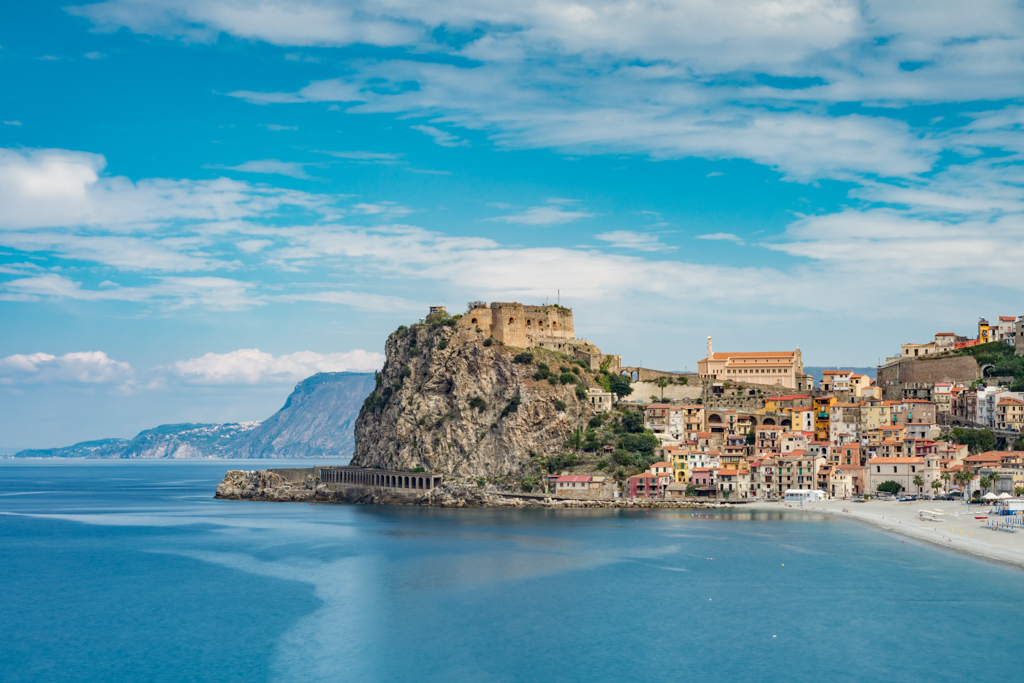
The origins of Scilla are extremely old. It has forever been at the centre of myths and legends, the inspiring muse of artists and poets of all times. Its small white houses piled up on the promontory overlooking the crystal clear sea, blending in with the rocks of the coast, create a fairy-tale landscape.
PUGLIA
SAP TEMPOLIBERO | Ruffano (LECCE)
Santa Maria al Bagno
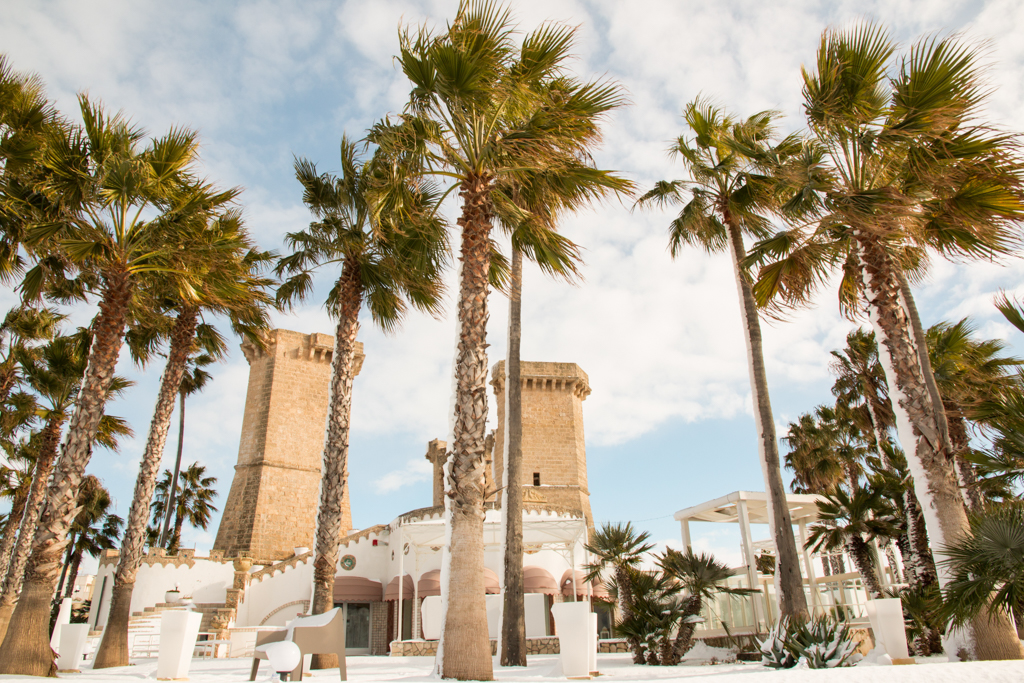
The town of Santa Maria al Bagno has been inhabited since ancient times, as evidenced by the discovery of numerous archaeological finds from prehistoric times. The village began as a commercial port, being able to provide shelter to ships in times of a storm. In 1982 the wreck of a ship dating back to the 3rd century BC with a cargo of Greco-Italic amphoras was discovered. The Torre del Fiume, an ancient defence system of which today only the four towers can be seen, served to defend the town and the spring – a precious spot for the inhabitants and much sought after by pirates to obtain water.
Porto Selvaggio
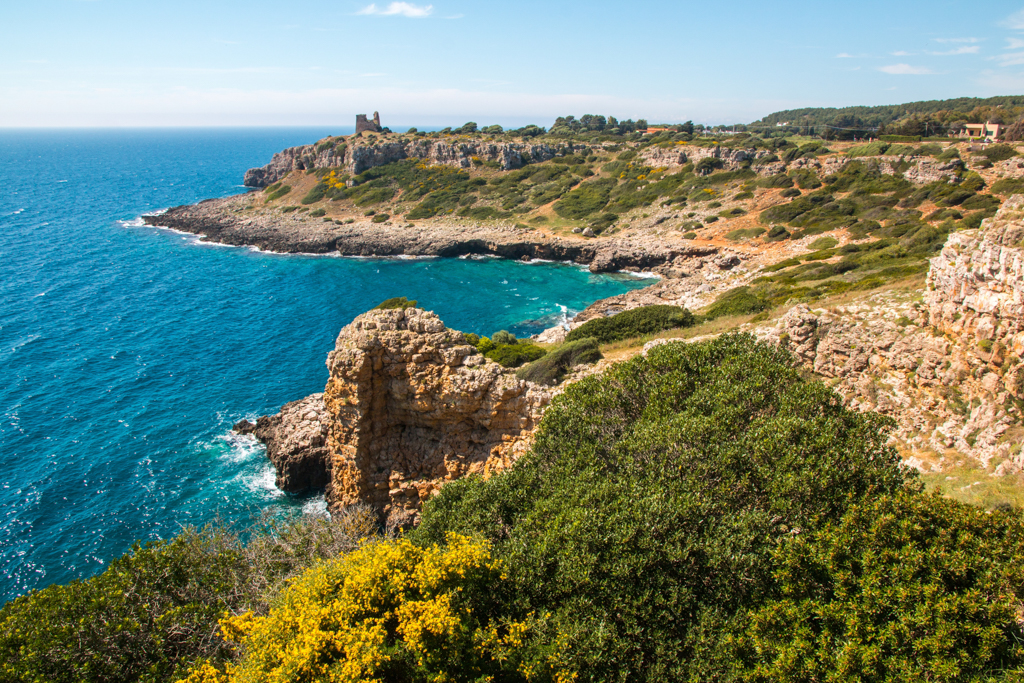
The bay of Porto Selvaggio, which gives its name to the entire park, includes 432 hectares of coastline, 268 of which are pine forests. The crystal clear sea is characterised by a stream of cold fresh water running through the bay. In the Grotta del Cavallo (Horse Cave) remains dating back to Neanderthal man have been found.
SARDINIA
CHELU | Quartu Sant’Elena (CAGLIARI)
Capo Malfatano
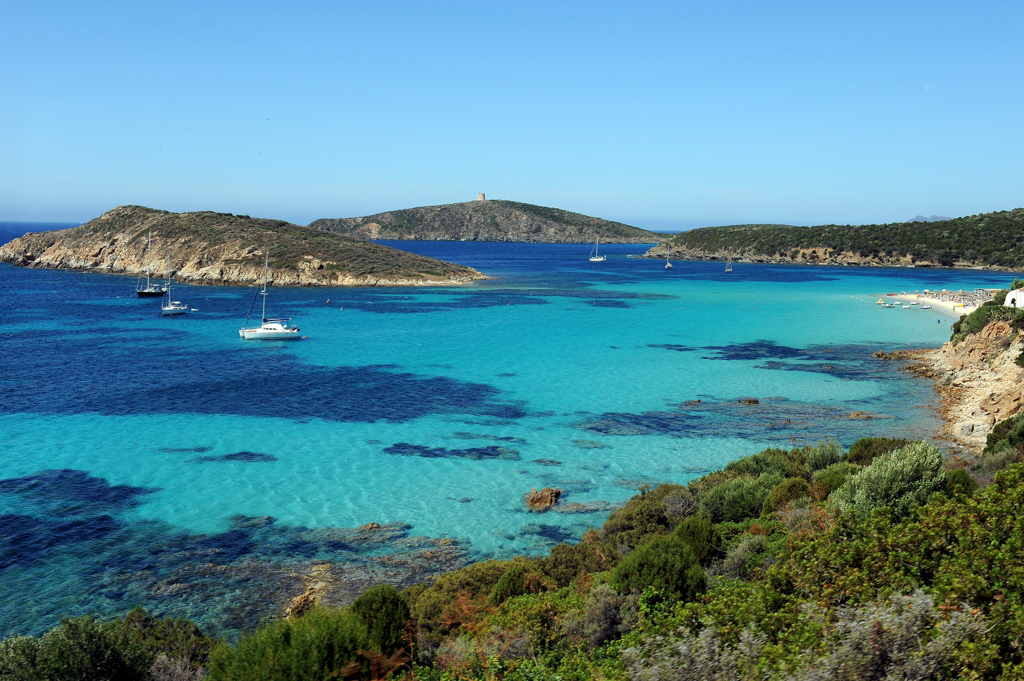
Overlooked by a Spanish tower, the beach of Capo Malfatano, one of the most beautiful in the south of the island, stands out for its great scenic impact, its clear and shallow seabed, with water of a shade between emerald green and turquoise. From the top of its promontory you can enjoy a spectacular view of the nearby bays.
Gola di Gorropu and Altopiano di Golgo
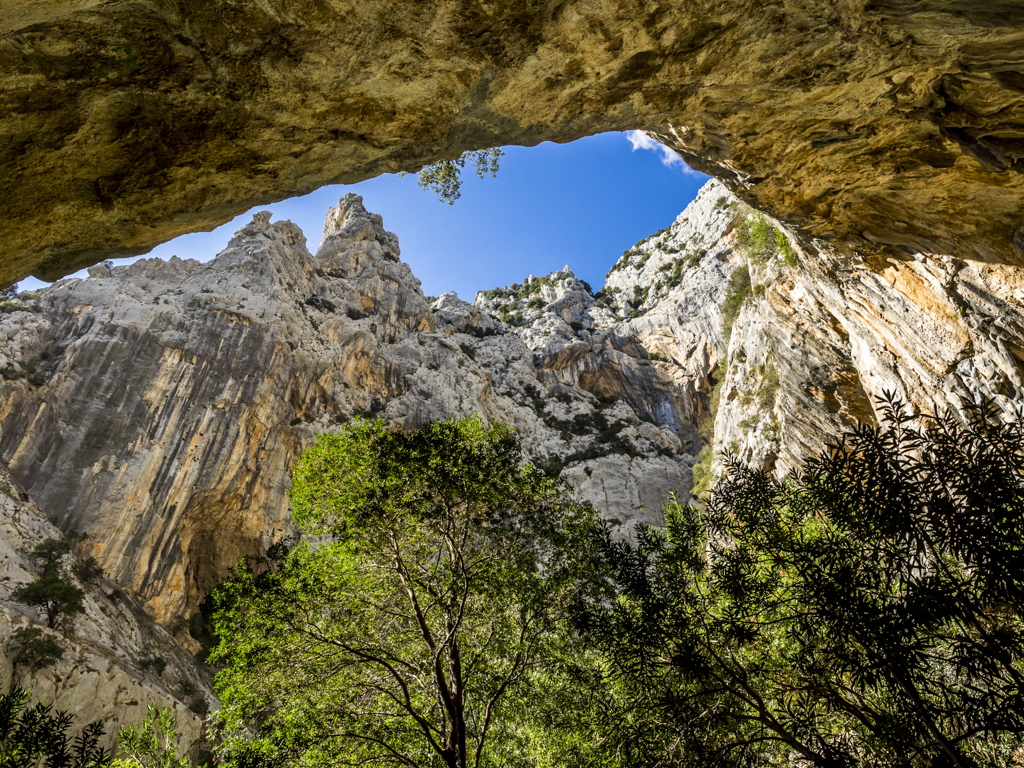
The Gola di Gorropu, caused by erosion, is the most spectacular gorge in Europe and one of the deepest. The unusual nature of the place has led to several legends: it is said that, from the narrowest point of the gorge, where the vertical walls exceed 450 metres, you can see the stars in broad daylight.
Rich in important historical and archaeological finds and known above all for the presence of a frightening karst chasm called “Su Sterru” (one of the deepest in Europe among those with a single span), the plateau Altopiano di Golgo is like an outdoor museum: wells to celebrate ancestral rites, domus de Janas, which bear witness to the presence of humans in the Neolithic age, tombs of giants and almost twenty Nuragic complexes, placed as sentinels at the entrances to the valley.
SICILY
VEMACAR | PALERMO
Zingaro Nature Reserve
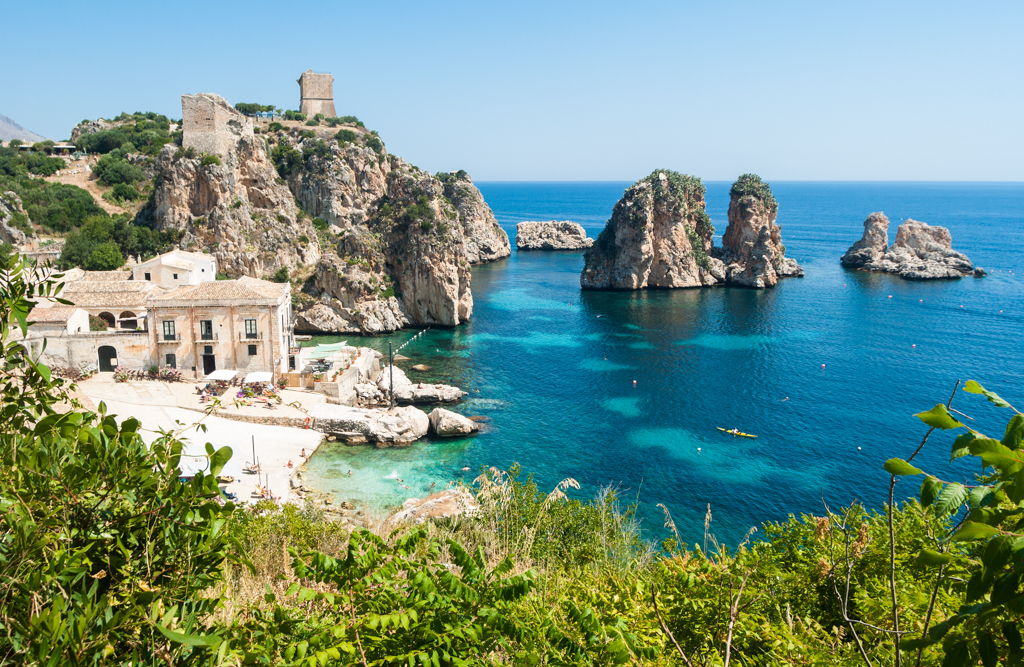
On the stretch of coast that goes from San Vito Lo Capo to Castellammare del Golfo, across seven kilometres of unspoilt nature, you will find the Zingaro Nature Reserve. The ancient Greeks and Latins called it Cetaria because of the abundance of tuna that were found in its waters. A landscape marked by limestone rocks overhanging a clear turquoise sea, small coves and white pebble beaches, ravines and caves inhabited since the Upper Palaeolithic, such as the important prehistoric site of the Grotta dell’Uzzo.
Wildlife Oasis of Vendicari
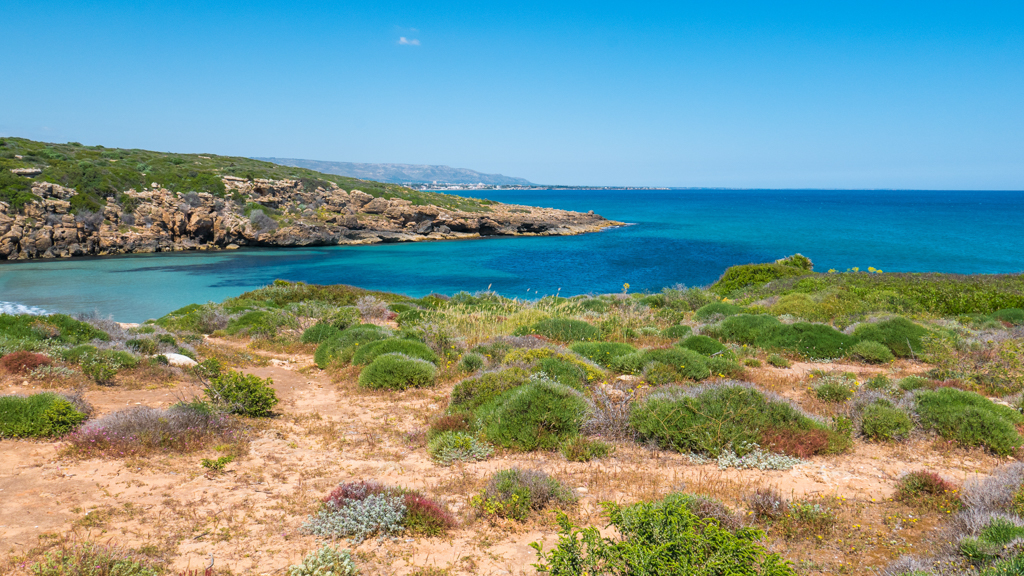
Between Noto and Marzamemi there is a corner of unspoilt paradise: the Vendicari Nature Reserve. Inside the reserve, an entire ecosystem lives undisturbed. From the thick vegetation opens up a crystal clear sea with long, golden beaches, which in a few hundred metres turn into rocks overhanging the deep waters.

